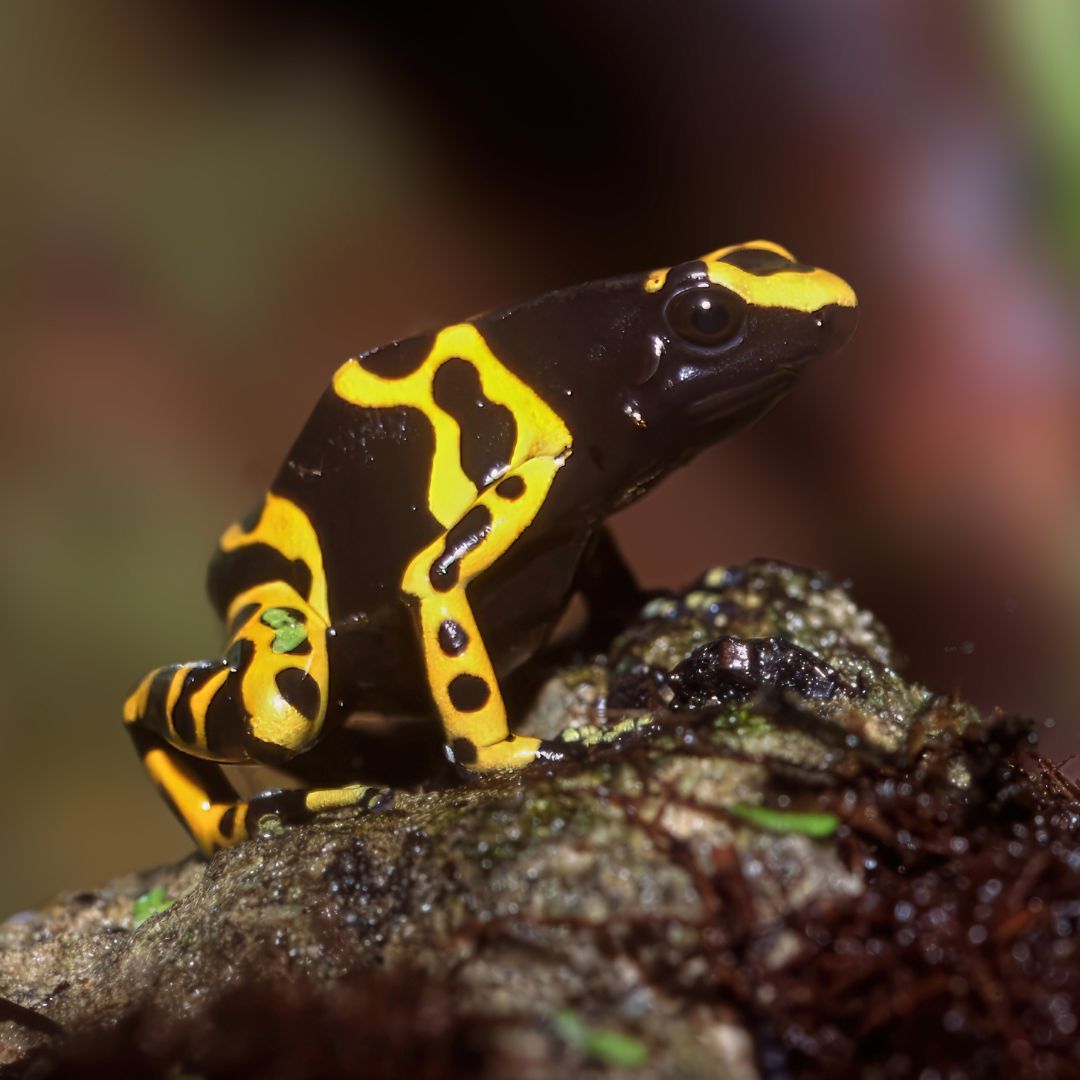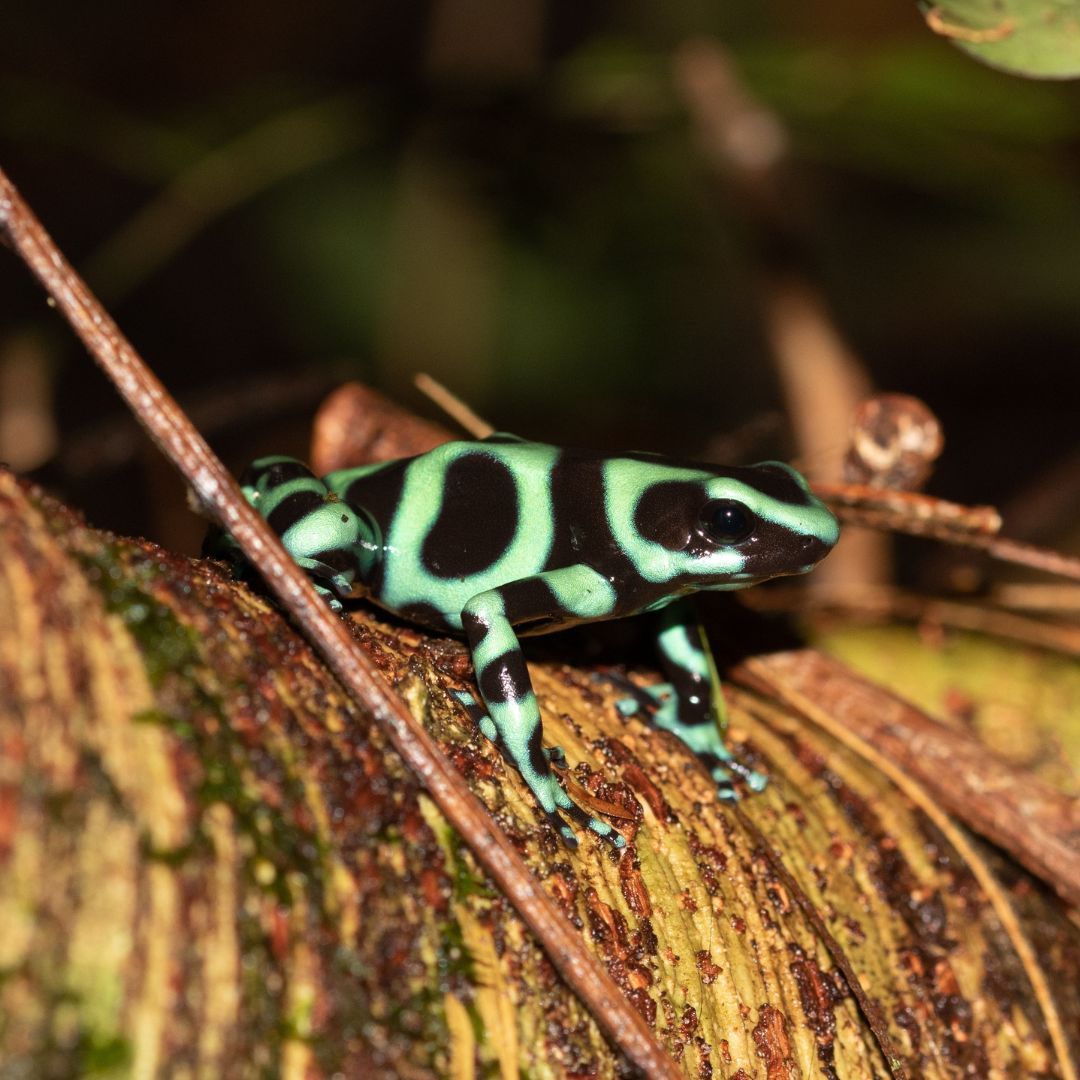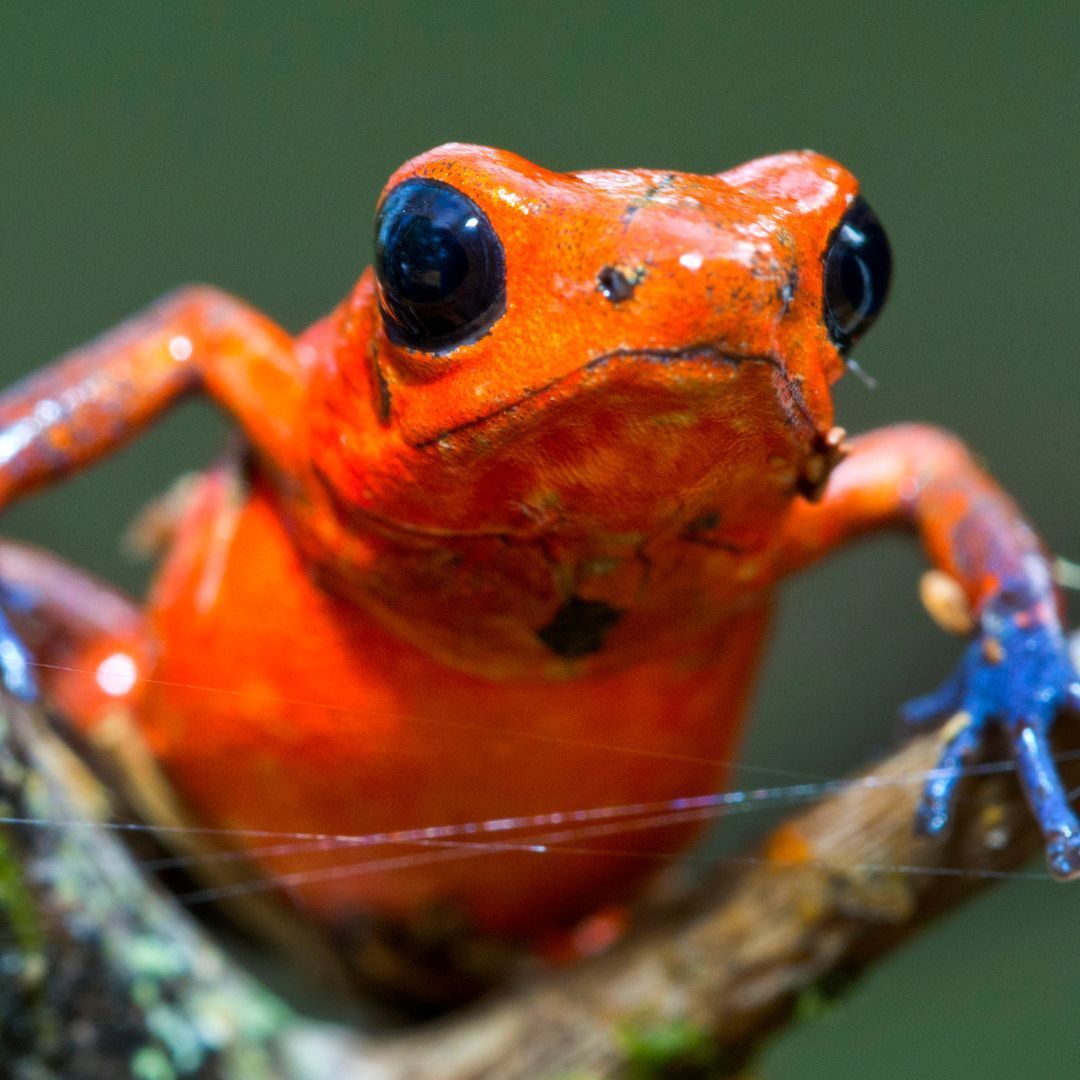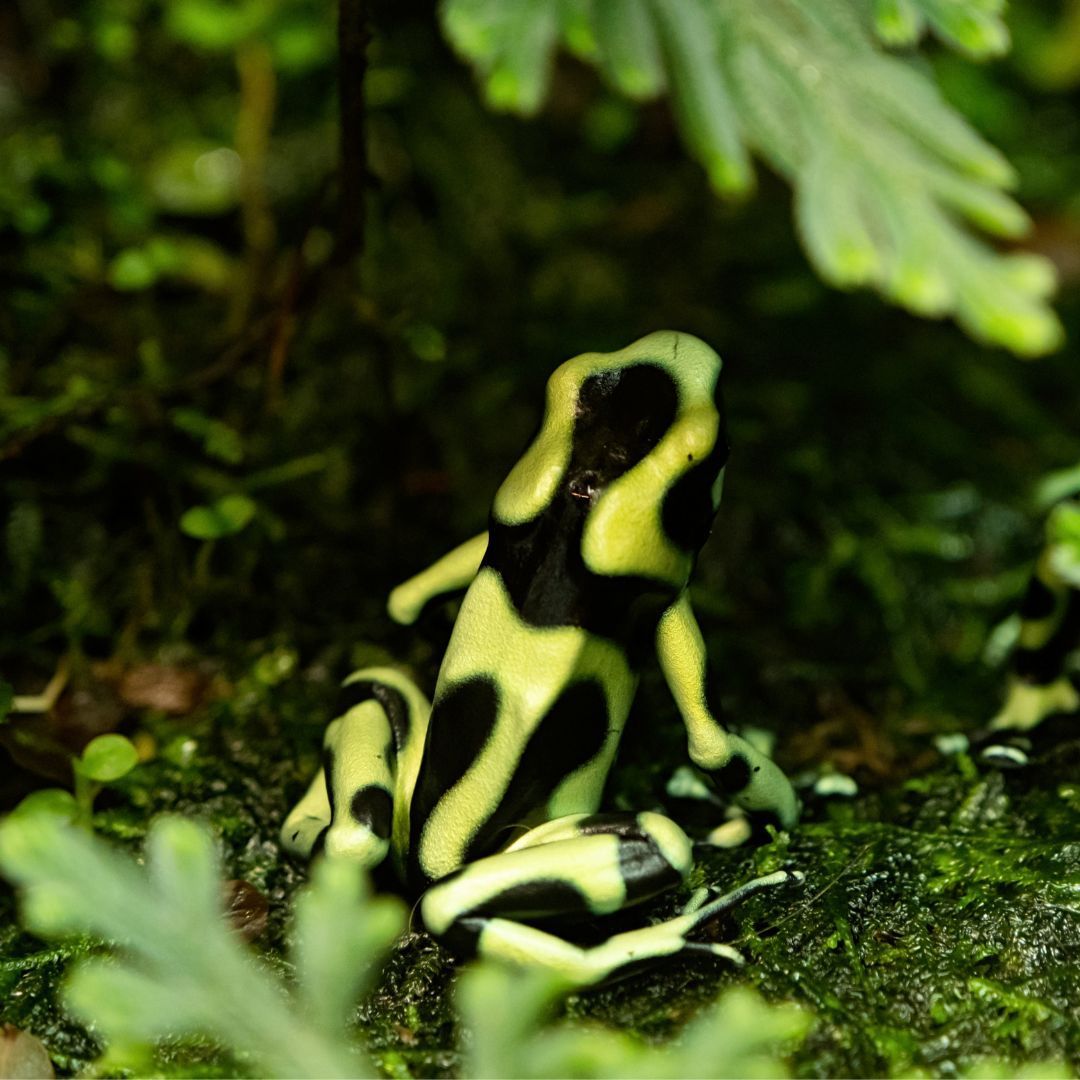Poison Dart Frogs

Let's Learn About Poison Dart Frogs
Word of the Week
Secretion
A secretion is a substance, often a liquid, that is produced by a gland or organ.
Many frogs, including poison dart frogs, secrete poison from small glands in their skin.
Fast Facts

Where do poison dart frogs live?
Poison dart frogs live in Central America and South America.
They are found in tropical rainforests on the forest floor.
What do poison dart frogs eat?
Poison dart frogs are carnivores.
They eat ants, mites, termites, and beetles. Poison dart frogs have a sticky tongue used to grab prey. Scientists believe poison dart frogs get their poison from their food!


What traits do poison dart frogs share?
While poison dart frogs may be different colors, they do have several traits in common. Most poison dart frogs...
- Are very small in size, usually less than 2 inches long.
- Are diurnal, meaning they are away during the daytime.
- Have sticky toes to help them climb.
- Lay eggs on leaves or exposed roots.
- Are good dads that move their tadpoles to a pool after they are born.
How many poison dart frogs are there?
Scientists have identified about 170 species of poison dart frogs.
Unfortunately, many species of poison dart frogs are endangered due to threats like habitat loss and disease spread by a harmful fungus.

Species Spotlight
Golden Dart Frog
Golden poison frogs, also known as golden dart frogs, are one of the most brightly colored and adorable species of dart frogs. Their yellow or green bodies measure just over 2 inches long. They are the largest species of poison dart frog. However, don’t let their adorableness fool you. Golden poison frogs are considered one of the most poisonous animals in the world!
Like most poison dart frogs, golden dart frogs get their toxins, or poison, from their prey. They mostly eat ants, but they also eat beetles and other insects. Scientists still question which insect gives golden dart frogs the dangerous toxin, though they think it may be from a beetle species. They also hypothesize that the golden dart frog changes the toxin to make it more dangerous once it has entered their body.
One golden poison frog has enough poison to kill 10,000 mice. However, many predators are cautious of golden poison frogs thanks to their bright colors. Like most dart frogs, golden dart frogs have brightly colored skin to warn predators of their danger. Therefore, they have very few (if any!) predators. These small but toxic amphibians are not to be messed with.
Crocodile
ButtonBRAIN BLAST
In our lesson, we learned that some frogs mimic the bright colors of poison dart frogs to trick predators into thinking they are more dangerous than they are. Venomous coral snakes also have mimics! Do some research to learn what snakes mimic coral snakes.
Conservation Corner
Chytrid Fungus
Poison dart frogs face many threats in the wild. Their rainforest home is being destroyed and poachers take them from the wild to sell. However, dart frogs and other amphibians also face a different, more deadly threat.
In the early 1990s, thousands of frogs were found dead in Queensland, Australia. Scientists discovered the deaths were caused by a fungus called the chytrid fungus. Fungi are a group of organisms different from animals and plants. It includes mushrooms, mold, yeast, and more. Some fungi, like mushrooms, are helpful in nature whereas others are harmful.
The chytrid fungus is harmful to amphibians. They can develop a disease called chytridiomycosis when exposed to the fungus. Frogs with chytridiomycosis experience heavy shedding of their skin, wounds on their legs, and, eventually, death.
Today, the chytrid fungus is found in more than 60 countries. Scientists believe is spread through the illegal animal trade. Unfortunately, they have not found a way to treat the disease in wild frogs. The best way to stop the spread of chytrid fungus is to leave amphibians where they are! Do not take amphibians from the wild, and do not release any pet amphibians into the wild.
Poison Dart Frog Problems
Flip the cards and determine if they are a pair. Keep flipping until you match all the pairs.
Learn More!
Glossary
Adaptation
The process by which a species becomes more fit for its environment over the course of several generations. It is a result of natural selection.
Amphibian
A cold-blooded vertebrate with permeable skin that goes through a metamorphosis!
Aposematic Coloration
Bright colors used to warn predators of poison.
Carnivore
An animal that eats other animals.
Cold-Blooded
An animal that relies on the outside temperature to regulate their body temperature (reptiles and amphibians). Also known as ectothermic.
Deforestation
The process of removing trees by cutting them down to use their wood or burning them to make room for something else.
Endangered
Referring to an organism that is threatened with extinction.
Gland
An organ in many animals that produces a substance (ex. sweat glands, venom glands, preening glands).
Illegal Pet Trade
The illegal collection, purchase, and sale of a wild animal.
Metamorphosis
The process of an animal changing and developing from an egg to an adult through different life phases.
Mimicry
An animal that looks, acts, or sounds like something other than itself.
Poison
A toxin that is eaten or absorbed through the skin.
Predator
An animal that hunts other animals for food.
Prey
An animal that is hunted and eaten by another animal.
Rainforest
An ecosystem that receives a large amount of rain and has trees that form a closed canopy.
Secrete
A cell, organ, or gland producing and expelling a substance.
Species
A closely related group of animals with similar characteristics that are capable of reproducing (example: tigers).
Territorial
Referring to an animal that defends an area (its territory) from other members of its species.
Toxin
An animal that has a backbone.





